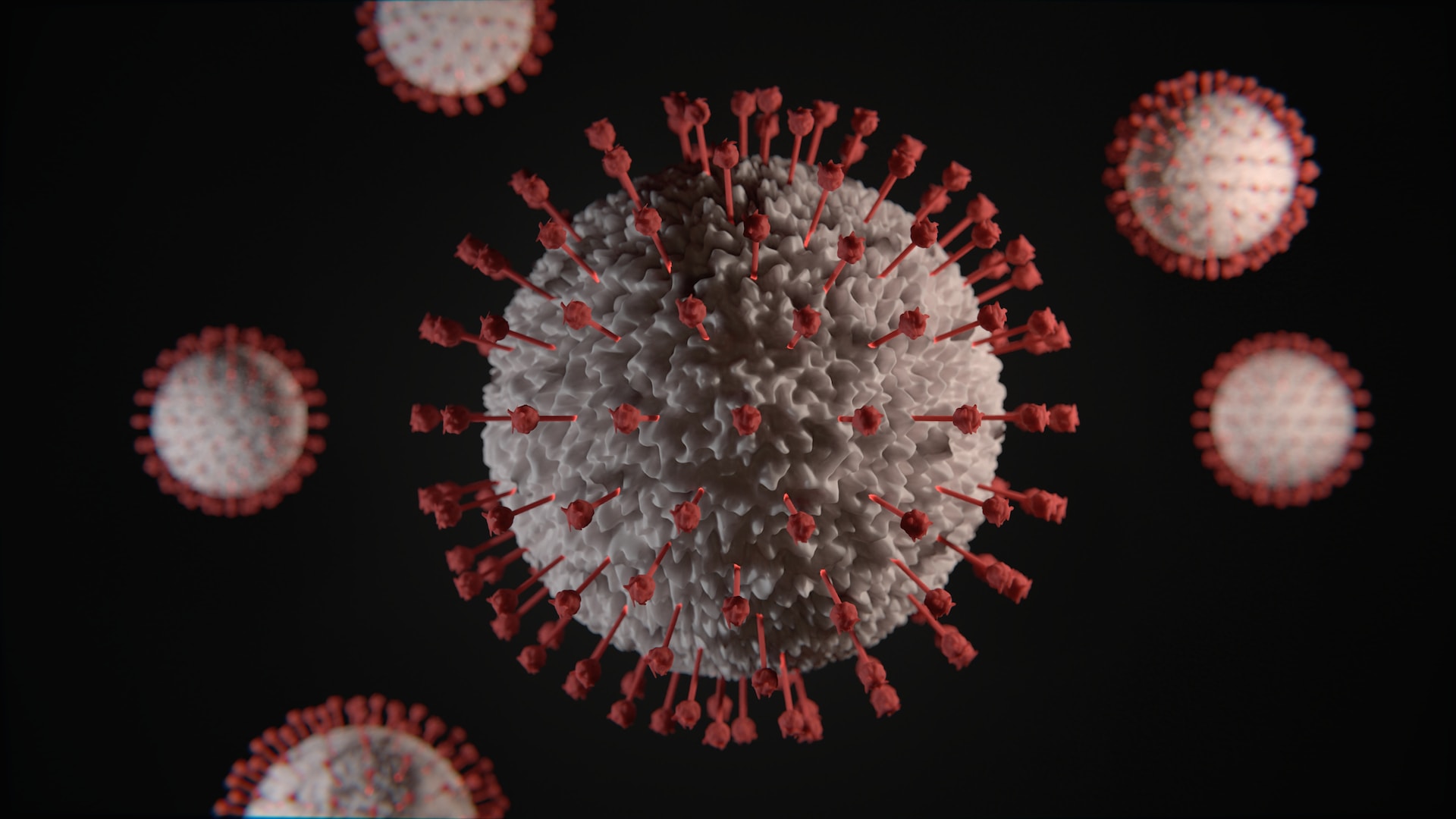The Epstein Barr Virus, or EBV, is a germ that only infects humans. Its classification is within the herpes group. Lots of us carry these kinds of viruses. Back in 1964, this specific virus was discovered by two scientists – Michael Epstein and Yvonne Barr. Hence its name, the Epstein-Barr Virus.
The virus primarily attacks B lymphocytes, starting a latent form of infection. The virus has been implicated in the etiology of various diseases, including cancer, but it is worth remembering that many people go through Epstein-Barr Virus infection asymptomatically.
Epstein-Barr Virus infections are prevalent. Most people will become infected with it at some point in their lives. In most cases, the first contact with the virus occurs in adulthood. At present, scientists are studying the Epstein-Barr Virus a lot.
The Epstein-Barr Virus can live inside the body, hidden for numerous years. The bug usually wakes up when the body's defenses are really low.

The Epstein-Barr Virus travels through body fluids, especially spit and blood. You can get an Epstein Barr Virus infection from touching someone sick or, less often, from droplets in the air.
People who have infectious mononucleosis, those recovering from it, and people without any symptoms can all spread the infection. A sick person can make others sick for several months. Only humans can have Epstein Barr Virus; you can't get it from animals. Usual ways you can get Epstein Barr Virus are:
Close contact with the bodily fluids of a person who has the Epstein Barr Virus in their body can result in infection. This is the most common mode of disease. The virus is transmitted with the infected patient's saliva during direct contact. It is also possible to spread the virus through sexual intercourse. The virus can spread this way because it involves heavy breathing and contact with saliva, but intercourse also involves other bodily fluids where the virus can reside.
The infectious material is mainly saliva containing Epstein-Barr Viruses, and the mouth is the gateway to infection. So, drinking from the same bottle or sharing food can lead to infection. Children often become infected by putting toys swallowed by other children infected with the virus into their mouths. In addition, Epstein Barr Virus infection can occur from sharing personal hygiene items, including a toothbrush.

This is another way to contract the Epstein-Barr Virus. Infections are among the most common complications in organ and hematopoietic cell transplant recipients. The development of infection is determined by the virulence of the microorganism on the one hand and the host's susceptibility on the other.
Most infections occur within the first 4-6 months after transplantation. The source of viral infection can be the hospital or home environment, the transplanted organ, or viruses in the recipient's body in a state of latency. Viral infections are among the most common complications in organ transplant recipients organ transplants.
Infection most often occurs through contact with saliva, but it is possible to become infected through a blood transfusion or blood-forming cell transplant. Transfusion is a procedure that involves the administration of whole blood or its components through intravenous entry.
Although transfusion is, in many cases, a life-saving procedure, the question is still asked whether it is safe for the recipient in the first place. Since blood donors are volunteers, the question remains whether the blood is adequately tested for transmitting various microorganisms. In this regard, infections after transfusion are rare. Although the risk of transmission of infection is minimal, it does exist.
The first symptoms appear 4 to 6 weeks![]() after Ebstein-Barr virus infection occurs. Teenagers and adults are most severely affected by the disease. The Epstein-Barr Virus can reactivate because of the latent presence of the virus in the body, even months or years after infection.
after Ebstein-Barr virus infection occurs. Teenagers and adults are most severely affected by the disease. The Epstein-Barr Virus can reactivate because of the latent presence of the virus in the body, even months or years after infection.
Symptoms can vary, as the Ebstein-Barr virus can cause various diseases. But the general symptoms of Epstein Barr Virus infection can include the following symptoms:

Fever – Fever results from the body's temperature regulation mechanisms being tuned from a standard range to a higher one. Fever is a common symptom that accompanies many different diseases, especially infections, including viral ones. Fever is also a characteristic symptom of mononucleosis, a disease caused by the Ebstein-Barr virus. During this disease, high fever can persist for up to several weeks.
Loss of appetite – Viral infections often cause general weakness, malaise, and loss of appetite. Appetite disorders can present as excessive or slight appetite. Speaking of appetite disorders, mentioning the accompanying weight change is essential. Weight loss can exacerbate feelings of fatigue.
Rash – A body rash is multiple lesions on the skin in the form of spots, blisters, papules, blisters, or pustules. The rash is sometimes a symptom of allergies but can also indicate Epstein Barr Virus infection. The rash is also a symptom suggestive of mononucleosis. In the course of this disease, a rash often appears. It is vivid red, often very intense, rash-like, and generalized, involving the skin of the hands and feet.
Sore throat – Sore throat is defined as painful complaints not only of the throat but also of the palatine tonsils, palate, and larynx. Its most common cause is infections caused by viruses. A less severe sickness often proves the viral nature of a sore throat. However, if a person has a long-lasting high fever, big tonsils, and a sore throat, that could point to mononucleosis.
Enlarged cervical lymph nodes – More prominent lymph glands usually suggest a slight infection and are short-lived. However, if there are concerning shifts, it's vital to see a doctor to find the cause and start the right treatment. At times, you can visibly spot swollen lymph glands in the neck, behind the ears, or under the arms. They show up as small lumps beneath the skin. When you touch the spot, you can feel stiff lumps. At times, it also gets painful or swollen.
Sore muscles – This common problem happens when our bodies react to harmful invaders. It's part of our bodies' early response to fight off these harmful invaders. It involves proteins called pro-inflammatory cytokines, which cause the breakdown of muscle proteins. Typically, muscle pain passes within a few days of the onset of the infection. A typical symptom during the infection is myofascial pain accompanied by muscle weakness. During a flu-like infection, limb pain can negatively affect daily functioning and quality of life, as can a sore throat, fever, or other symptoms.
Enlarged spleen and liver – This is when both the spleen and liver are bigger than usual, a condition known as hepatosplenomegaly![]() . It's something that can happen because of different illnesses, like mononucleosis. The big spleen can cause hurt and a feeling of spreading, usually on the left side under your ribs and middle chest area. A big liver can make your belly area larger and tender. Painful sensations occur due to pressure of the liver on neighboring tissues. The liver itself has no pain innervation, so lesions in its area do not hurt.
. It's something that can happen because of different illnesses, like mononucleosis. The big spleen can cause hurt and a feeling of spreading, usually on the left side under your ribs and middle chest area. A big liver can make your belly area larger and tender. Painful sensations occur due to pressure of the liver on neighboring tissues. The liver itself has no pain innervation, so lesions in its area do not hurt.
Epstein Barr Virus can be related to the development of various diseases. One of the common cases is mononucleosis![]() . It can also contribute to the growth of cancer, so if you notice alarming symptoms, you should perform the appropriate diagnostic tests to begin treatment as soon as possible. Diseases caused by the Epstein Barr Virus include:
. It can also contribute to the growth of cancer, so if you notice alarming symptoms, you should perform the appropriate diagnostic tests to begin treatment as soon as possible. Diseases caused by the Epstein Barr Virus include:

Infectious mononucleosis is a disease symptom occurring during Epstein Barr Virus infection. The most common cases of mononucleosis are children between the ages of 2 and 7, teenagers, and young adults. Similar symptoms can occur when infected with other pathogens, such as adenoviruses. This is known as mononucleosis-like syndrome![]() .
.
Symptoms – Initially, the infected person has muscle aches, fatigue, chills, and lack of appetite, which is characteristic of viral infections. After that, inflammation of the throat with enlargement of the palatine tonsils, high fever, and enlargement of lymph nodes can be observed. Enlargement of the liver and spleen may also be present. Some patients have a runny nose or eyelids and nasal root area swelling. In children, ethereal rashes may often appear during viral infections.
Treatment – Infectious mononucleosis is treated symptomatically. In the case of fever, antipyretics and analgesics are administered. With severe swelling of the respiratory tract, glucocorticosteroids may be necessary. Antibiotics are required for patients with bacterial superinfections. Mononucleosis will persist for several weeks. If it lasts longer, it usually resolves after about 3-4 weeks, leaving no complications other than severe weakness and lymph node enlargement, which can persist for up to six months.
Pharyngitis![]() is the presence of inflammation localized to the mucous membranes of the throat and mouth. The most common factors responsible for pharyngitis include pathogenic microorganisms, including viruses. However, pharyngitis is rarely caused by Epstein-Barr Viruses. If a person with viral pharyngitis sneezes and coughs and has a runny nose, as much as possible, he can become a potential source of infection for another person. The droplet route spreads viruses that attack the upper respiratory tract.
is the presence of inflammation localized to the mucous membranes of the throat and mouth. The most common factors responsible for pharyngitis include pathogenic microorganisms, including viruses. However, pharyngitis is rarely caused by Epstein-Barr Viruses. If a person with viral pharyngitis sneezes and coughs and has a runny nose, as much as possible, he can become a potential source of infection for another person. The droplet route spreads viruses that attack the upper respiratory tract.
Symptoms – Throat inflammation is associated with redness and swelling of the mucous membranes, pain, and difficulty swallowing liquids and food. Patients often run a fever and may complain additionally of earache, headache, cough, and accompanying rhinitis. Uncomplicated viral pharyngitis often tends to resolve spontaneously about 5-7 days after the onset of infection.
Treatment – The treatment of viral pharyngitis involves the abolition of its distressing symptoms. Drugs that act in the throat topically, mainly analgesics, are used. Treatment also involves agents that reduce the number of microorganisms in the oral cavity, in combination with analgesics in the form of aerosols or gargle solutions. It is worth remembering that antibiotics are drugs that do not work on viruses, so using them during viral pharyngitis is unnecessary.
Anatomically, the tonsils are located in the back of the throat. They are structures of lymphoid tissue![]() , which in the human body are associated with immunity and are involved in fighting infection. The tonsils serve as key soldiers battling microbes that enter through breath or consumption. When they interact with infecting elements like viruses, the tonsils expand, launching an internal inflammatory response aimed at eliminating the leading cause of the inflammation.
, which in the human body are associated with immunity and are involved in fighting infection. The tonsils serve as key soldiers battling microbes that enter through breath or consumption. When they interact with infecting elements like viruses, the tonsils expand, launching an internal inflammatory response aimed at eliminating the leading cause of the inflammation.
Symptoms – A symptom directly related to tonsillitis is a sore throat that makes swallowing difficult. Accompanying symptoms include general body weakness and fever, chills, and headaches. The tone of voice may change, and enlarged lymph nodes may be felt and detected in the neck. The throat is congested and swollen in viral tonsillitis, and no white plaques indicate the disease's bacterial origin.
Treatment – In treatment, it is essential to determine the etiology of the infection. In the case of a viral infection, symptomatic treatment is used to reduce local and painful discomfort. These include tablet sprays to reduce inflammation and reduce swelling in the throat. In chronic and recurrent infections, surgical treatment is considered, involving removal of the tonsils.
Pneumonia is inflammation involving the alveoli or interstitial tissue of the lungs. Pneumonia is an infectious disease that affects one or both lungs. It occurs as a result of pathogenic microorganisms entering the body. Most often, the germs colonize the nasopharyngeal cavity through the droplet route.
If the body is functioning correctly, immunity is not impaired, and there are no aggravating chronic diseases, microorganisms are destroyed by the cells of the immune system, and the disease does not develop. However, microorganisms multiply in the alveoli if the body cannot defend itself adequately for various reasons. An infection develops, covering an increasingly significant area of the lungs.
Symptoms – Symptoms of pneumonia are mainly fever, wet cough with sputum, chest pain, and shortness of breath. In typical pneumonia, these symptoms appear suddenly. They can be more or less severe. In the seniors, pneumonia symptoms may be less clear-cut. In addition to fever, there may be accelerated breathing and impaired consciousness. Patients may also complain of a racing heart and sore lungs. Wheezing may suggest viral or atypical pneumonia.
Treatment – In the case of viral pneumonia, administering antibiotics is unnecessary. In the treatment of viral pneumonia, the most important thing is the removal of bronchial secretions. In addition to expectorant medications, regular patting of the back and watering the child is necessary for young children. For viral pneumonia, symptomatic treatment and antiviral treatment are used. The disease generally lasts about 1-2 weeks.

Myocarditis is a cardiac disease that can have many causes. Indeed, it's a severe situation that calls for prompt doctors' advice and correct medical action. Myocarditis, if not addressed, can make way for dangerous heart rhythm issues![]() . Simply put, myocarditis occurs when inflammation forms within the heart muscle tissue. In addition, other layers of the heart, namely the pericardium or endocardium, may also create inflammation.
. Simply put, myocarditis occurs when inflammation forms within the heart muscle tissue. In addition, other layers of the heart, namely the pericardium or endocardium, may also create inflammation.
Symptoms – Symptoms of myocarditis are pretty variable between individual patients. They are due to the inflammatory process within the myocardium and impaired cardiac function secondary to inflammation, which results in abnormal blood pumping into the bloodstream. Chest pain, irregular heartbeat, and breathing issues are typical symptoms. Myocarditis might also show signs related to the initial infection causing inflammation.
Treatment – Treating myocarditis varies. It is based on what causes the disease and the patient's other health problems. The goal is to manage heart rhythm issues. In cases of myocarditis caused by certain viruses or in the course of certain autoimmune diseases, it is possible to implement targeted therapy to treat the condition's cause.
Viral hepatitis is an infectious condition of the liver with an acute course caused by hepatotropic viruses that lead to liver damage. Six different types of hepatitis viruses cause various forms and symptoms of the disease. The Epstein-Barr Virus causes hepatitis in rare cases.
Often, hepatitis![]() occurs as a complication of mononucleosis. Moderately elevated levels of liver enzymes are frequently observed in the course of infectious mononucleosis. Formal liver tests may indicate liver dysfunction and pancreatic problems and may be indicative of poor eating habits. Hepatitis caused by Epstein Barr Virus can sometimes be severe.
occurs as a complication of mononucleosis. Moderately elevated levels of liver enzymes are frequently observed in the course of infectious mononucleosis. Formal liver tests may indicate liver dysfunction and pancreatic problems and may be indicative of poor eating habits. Hepatitis caused by Epstein Barr Virus can sometimes be severe.
Symptoms – Symptoms of viral hepatitis vary concerning the type of virus, while it is possible to distinguish those that appear with most infections. Symptoms common to viral hepatitis are mainly malaise, flu-like symptoms, an increase in blood bilirubin levels, a feeling of fatigue, lack of appetite, weight loss with an increase in abdominal girth due to an enlarged liver, as well as dark-colored urine and light-colored stool. In blood tests, increased above-normal levels of liver enzymes are observed.
Treatment – Viral hepatitis is a disease that often resolves on its own. Still, it is worth bearing in mind that, in some cases, the condition can lead to severe complications if left untreated. Whether hospital treatment or home treatment will be necessary, the patient needs to get as much rest as possible, which helps increase blood flow and liver regeneration. It is also essential to stop drinking alcohol and eat a proper, easy-to-digest diet, which will have a positive effect on the regeneration of damaged liver cells. In severe cases, glucocorticosteroids are necessary.
Thrombocytopenias are hemorrhagic diathesis caused by a decrease in the number of thrombocytes in the blood below average values. Thrombocytopenia can be an independent disease or one of the symptoms of a disorder.
Thrombocytopenia![]() is included in the group of conditions referred to as hemorrhagic diathesis. The primary test to assess the number of platelets is a blood count and blood smear evaluated under a microscope. Thrombocytopenia can be a symptom of viral hepatitis. The platelet count may also decrease after a viral infection.
is included in the group of conditions referred to as hemorrhagic diathesis. The primary test to assess the number of platelets is a blood count and blood smear evaluated under a microscope. Thrombocytopenia can be a symptom of viral hepatitis. The platelet count may also decrease after a viral infection.
Symptoms – Due to the participation of platelets in the process of blood clotting, a decrease in the number of platelets will be manifested by symptoms associated with impaired coagulation. Patients will often develop small petechiae on the skin or mucous membranes. An increased tendency to bruise is also characteristic. Symptoms of thrombocytopenia can also include bleeding from the gums, prolonged and very heavy monthly bleeding, nosebleeds, and blood in the urine, indicative of bleeding from the bladder mucosa. As the platelet count decreases, the symptoms worsen.
Treatment – Since thrombocytopenia is most often a consequence of other diseases, the most essential thing in management is to determine the root cause of thrombocytopenia. In some cases, a blood transfusion may be necessary. A vitamin-rich diet, such as B12 or folic acid, can aid treatment. In severe cases, medical intervention, such as spleen removal, may be required.
Rarely Epstein Barr Virus can cause acute neurological diseases. These include meningitis![]() and encephalitis
and encephalitis![]() , as well as Guillain-Barré syndrome. Meningitis happens when tiny life forms known as microbes invade the fluid in your brain and spine. Viral meningitis is one type, coming from a virus that moves into the central nervous system, which includes your brain and spinal cord. This virus travels through the layers and liquid areas around these parts.
, as well as Guillain-Barré syndrome. Meningitis happens when tiny life forms known as microbes invade the fluid in your brain and spine. Viral meningitis is one type, coming from a virus that moves into the central nervous system, which includes your brain and spinal cord. This virus travels through the layers and liquid areas around these parts.
Another type is viral encephalitis, which is when a virus infects the tissue of your brain. The inflammatory process can involve neural tissue, glial, microglia, and brain blood vessels. Guillain-Barré syndrome, on the other hand, is an acute inflammatory peripheral neuropathy. This disease has generalized multifocal damage to nerve cells responsible for movement and sensation.
Symptoms – Viral meningitis usually produces symptoms characteristic of meningeal involvement: vomiting, headache, and neck stiffness. The course of viral meningitis is much milder compared to purulent meningitis. The main symptoms suggestive of encephalitis are fever, headache, and disturbance of consciousness, including seizures. Guillain-Barré Syndrome, on the other hand, is a clinical diagnosis of a disease manifested by progressive paresis and areflexia, developing in less than four weeks.
Treatment – Since all patients suspected of having viral meningitis or encephalitis require hospitalization, it is essential to see a doctor immediately and, if the patient's condition is serious, to call an ambulance. In the case of Guillain-Barré Syndrome, immunomodulatory therapy is used. Blood is drawn from the body. Then, its harmful antibodies are removed. The purified blood is then transfused into the patient's body.
Epstein Barr Virus is speculated to cause some rare types of cancer![]() . Epstein Barr Virus is found mainly in cancer cells in a latent state, but a small number of lytically infected cells promote tumorigenesis by releasing growth factors and oncogenic cytokines. Therefore, the Epstein-Barr Virus can lead to the development of the following cancers:
. Epstein Barr Virus is found mainly in cancer cells in a latent state, but a small number of lytically infected cells promote tumorigenesis by releasing growth factors and oncogenic cytokines. Therefore, the Epstein-Barr Virus can lead to the development of the following cancers:

Stomach cancer – Stomach cancer typically isn't found until it's developed quite a bit. The first signs are vague, like belly discomfort. Over time, you'll start feeling sick, might throw up, and feel full even if you haven’t eaten much. People tend to lose weight and lose interest in food, which can lead to extreme weight loss. As stomach cancer worsens, it can cause bleeding in your digestive system.
Hodgkin's lymphoma – Hodgkin's lymphoma![]() , once called malignant granuloma, is a malignant lymphatic system disease. It is characterized by giant neoplastic Reed-Sternberg cells with a multilobed nucleus and mononuclear Hodgkin cells. It develops mainly in young adults. The main symptom of Hodgkin's lymphoma is a non-painful enlargement of the lymph nodes. The cure for Hodgkin's lymphoma includes both radiation and chemo treatments. Identifying the illness early leads to a better chance of successful recovery.
, once called malignant granuloma, is a malignant lymphatic system disease. It is characterized by giant neoplastic Reed-Sternberg cells with a multilobed nucleus and mononuclear Hodgkin cells. It develops mainly in young adults. The main symptom of Hodgkin's lymphoma is a non-painful enlargement of the lymph nodes. The cure for Hodgkin's lymphoma includes both radiation and chemo treatments. Identifying the illness early leads to a better chance of successful recovery.
Burkitt's lymphoma – Burkitt's lymphoma![]() is caused by rampant lymphocyte growth. This unregulated expansion disrupts the normal functioning of the immune system. It occurs because the affected cells lose their original function. Symptoms depend on where these proliferating lymphocytes gather. These include night sweats, high fever, and weight loss. Another group of symptoms mainly originates in the abdominal cavity, the most common location of Burkitt's lymphoma. Patients especially complain of abdominal pain, nausea, vomiting, diarrhea, or constipation.
is caused by rampant lymphocyte growth. This unregulated expansion disrupts the normal functioning of the immune system. It occurs because the affected cells lose their original function. Symptoms depend on where these proliferating lymphocytes gather. These include night sweats, high fever, and weight loss. Another group of symptoms mainly originates in the abdominal cavity, the most common location of Burkitt's lymphoma. Patients especially complain of abdominal pain, nausea, vomiting, diarrhea, or constipation.
Nasopharyngeal carcinoma – This condition is a rare cancer that localizes in the nasal part of the throat. Due to its location within the nasal cavity, usually under the mucous membrane, it does not produce local symptoms for a very long time and often goes undetected even during a thorough ENT examination. A characteristic feature of this malignant neoplasm is the relatively early occurrence of metastasis to the lymph nodes of the neck from a tumor of minimal size. Symptoms related to its local growth, such as congested nose or otitis media, may also appear during nasopharyngeal cancer.
Epstein Barr Virus is one of the most common pathogens encountered by humans. Its unique and still not fully understood characteristics have focused the attention of virologists. Research is underway on the hypothesis that Epstein Barr Virus is responsible for the onset of certain psychological conditions, including depression and chronic fatigue syndrome. In addition, scientists have noted that Epstein Barr Virus can alter the expression of genes responsible for autoimmune diseases![]() . These include:
. These include:

Hashimoto's disease – Hashimoto's disease is an immune-mediated thyroid disease, also known as chronic lymphocytic thyroiditis. In this condition, a malfunctioning immune system begins to attack its thyroid gland, resulting in chronic thyroiditis. Since such a condition does not necessarily cause pain, it often goes unnoticed for a long time. Thyroid functions, however, gradually become more and more impaired, resulting in the gland producing fewer hormones.
Lupus – Systemic lupus erythematosus is an autoimmune connective tissue disease. Lupus is a very complex and unpredictable disease. It runs slightly differently in everyone. For example, in some people, symptoms may affect only the joints, while in others, they may involve other systems and organs. Untreated lupus can lead to dangerous complications. The disease has no cure, but early detection and the introduction of effective treatment enable the patient to function normally.
Type 1 diabetes – This is a long-term sickness part of collective metabolic issues. It's marked by hyperglycemia or high sugar levels in the blood. Type 1 diabetes most often comes from ongoing autoimmunity. Here, the body's defense system targets and ruins cells in the pancreas. The focus lies in a fitting low glycemic diet and insulin treatment to manage this disease. Proper diet and therapy significantly keep off chronic diabetes complications for a long.
Rheumatoid arthritis is a body defense system problem with a long-lasting course. The illness affects the tissues that connect our body parts, but if not treated, it can also harm other parts like our organs and systems. The joint pain disease could go unnoticed for weeks, months, or eleven years. In rare cases, symptoms of the disease appear suddenly. Over time, symptoms of rheumatoid arthritis, such as swelling, stiffness, and joint pain, appear. Implementation of treatment and adherence to general principles of a healthy lifestyle effectively relieves unpleasant symptoms and calms the disease for a long time.
Celiac disease – This health condition impacts internal organs and is linked to gluten's impact. In celiac disease, the body reacts abnormally to gluten, a substance found in many foods. It invades the small intestine's inner lining and sparks inflammation. This leads to the vanishing of tiny finger-like projections, or intestinal villi. As they fade up, it hampers the intestine's nutrient absorption. The remedy includes a lifelong avoidance of gluten. Taking gluten out of meals leads to swift health betterment.
Inflammatory bowel disease – These are familiar names for Crohn's and ulcerative colitis. They are marked by lasting inflammation in the digestive system. This swelling gradually harms the digestive system's walls. This causes problems like pain and diarrhea, difficulty absorbing nutrients, and often needs surgery to fix.
Multiple sclerosis – Multiple sclerosis is a chronic inflammatory-demyelinating disease of the central nervous system. Demyelination is the process of damage and breakdown of the myelin sheath surrounding nerve cells. These changes result in impaired transmission of nerve impulses. The disease usually has a phased course with periods of exacerbation and remission, and the disease itself is progressive and can lead to severe disability.
If characteristic symptoms appear, see a doctor immediately. The first diagnostic method is a medical history. However, additional tests should be performed when symptoms are non-specific or suggest a bacterial infection. Sometimes, the diagnosis is difficult, mainly because the lymph nodes, liver, and spleen enlargement occur in many other syndromes. To rule out other causes of infection, the following tests can be performed:

Blood morphology – If inflammatory mononucleosis is suspected, it is essential to evaluate the morphological picture of the peripheral blood. Characteristically, there is an increase in the number of white blood cells, with the presence of atypical lymphocytes![]() . However, this is not a characteristic symptom. In the case of Epstein Barr Virus, the diagnosis that definitively confirms or excludes infection is to look for antibodies.
. However, this is not a characteristic symptom. In the case of Epstein Barr Virus, the diagnosis that definitively confirms or excludes infection is to look for antibodies.
Liver tests – A test that evaluates the activity of aminotransferases, or liver tests, helps diagnose Epstein-Barr Virus infection. Liver tests are biochemical tests of the blood to assess liver function and the activity of the enzymes it produces. Based on this, the activity of liver status parameters is determined in the blood serum.
Serological test – The diagnosis is confirmed by a serological test that detects antibodies![]() directed against Epstein Barr Virus. Serological testing identifies and quantitatively or semi-quantitatively determines unknown antigens in blood serum, urine, and saliva. Through the antibody-antigen reaction, it is possible to decide whether antibodies or antigens appearing in connection with certain diseases are present in the patient's blood.
directed against Epstein Barr Virus. Serological testing identifies and quantitatively or semi-quantitatively determines unknown antigens in blood serum, urine, and saliva. Through the antibody-antigen reaction, it is possible to decide whether antibodies or antigens appearing in connection with certain diseases are present in the patient's blood.
Once the Epstein-Barr Virus invades immune cells, it remains there for the rest of the infected person's life. Treatment is purely symptomatic and involves the administration of drugs with antipyretic, analgesic, and anti-inflammatory effects. Antiviral medications are not used.
A standard Epstein Barr Virus infection recommendation is to drink plenty of mineral water and rest. Treatment is mainly symptomatic, easing the course of the disease. Generally, symptoms resolve after a few weeks to a few months. Sometimes, an antibiotic is indicated when bacterial complications occur, mainly bacterial pharyngitis. A sparing lifestyle is necessary later, significantly when the spleen is enlarged.
In severe cases of respiratory obstruction and other complications, treatment is done in the hospital. The prognosis is good, except in neurological, hematological complications, and splenic rupture cases. The possibility of the disease can be reduced by observing basic hygiene rules. Research is currently underway on possible vaccines![]() against the Epstein-Barr Virus.
against the Epstein-Barr Virus.

Epstein-Barr Virus infections are prevalent. However, most people will pass the infections without experiencing any symptoms. Most people will become infected with it at some point in their lives. Epstein Barr Virus is spread through body fluids, mainly saliva. However, saliva is not the only source of Epstein Barr Virus, as blood and semen are also involved.
When the Ebstein-Barr virus invades, it stays inside for several weeks before signs appear. After the initial infection, it goes dormant in the body. Yet, the Epstein Barr Virus can wake up again months or even years later. The folks most hit by this ailment are teenagers and grownups. Usual signs of the Epstein Barr Virus include high temperature, skin outbreaks, throat discomfort, and swollen nodes in the neck.
The most frequently seen initial infection that shows symptoms is infectious mononucleosis. Still, Epstein Barr Virus may trigger a variety of issues, including cancer and autoimmune diseases. When we think someone might have mono, examining their blood and giving them lab tests is critical. The primary way we treat it is to help with the symptoms they're experiencing. We might give them drugs to control their fever; sometimes, they might also need an antibiotic.